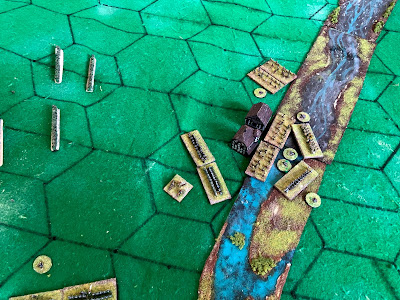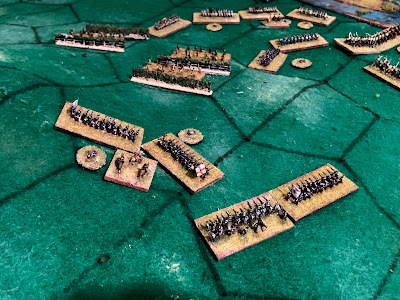Well September is over and I fell a bit short of my target. I clocked up 260 km (162 miles) on the bike and 32 km (20 miles) swimming. I was aiming for 300km bike and 35 km swimming. This is about 10% less than August. And about 45% down on Steve-the-Wargamer’s total, to say nothing of Jonathan’s.
Bike (km) | Swim (km) | |
August | 287 | 35 |
September |
286 | 32 |
In terms of excuses, the month got off to a bad start with 3 days laid up in bed, September is a day shorter, and I was still on holiday for the first few days of August. I swam/cycled on fewer days than in August, but the distances were longer on each occasion. In August I was typically doing 17km round trip by bike and a 1.6km swim. September's typical session was 20km by bike (I take the long way back) and 2km swimming. I've done the odd 3km swim too when I've been able to book a convenient 60 minute time slot (though on those occasions I've travelled by car).
I've not been religiously logging my times (especially cycling), but my swim speed has noticeably improved. I've knocked 5 minutes off my time for 2km. The cycling seems to be getting easier, and I'm pedalling up the slopes in higher gears on the way home. So that's pleasing progress.
This was before the latest tweak in my stroke technique. I'd just finished my swim one day last week and I stopped at the end of the pool to stretch a little before getting out. Next to me was one of the swim coaches who seems to have been a constant fixture at the pool over the 20-odd years I've been going. She turned to me and said, "I hope you don't mind but something's been really bothering me and that's your stroke. You put your hands in like [x] but if you did [y] and lift your elbow you'll get more 'catch' and it'll improve your stroke tremendously." I LOVE the fact she takes her craft so seriously that this was bugging her so much she had to speak out when she was off-duty. Since then I've tried to follow her advice (it certainly feels awkward) and it is definitely faster. At first I was getting breathless quite quickly. I guess this is because my arms are doing more work per stroke. I definitely noticed some aches where I hadn't ached before, but I'll persevere even though it’s not easy to create new habits.
Oh, and I've finished the weight loss phase of my fight the flab campaign. I reached my target weight (10km down in 3 months) in mid-September. I've been trying to maintain that level, but the calorie counting app I'm using has given me a baseline 'budget' 50% higher than my weight loss budget! This is far too much and I'm experimenting with different amounts to get it right. This is the really important stage as I've got to make this a permanent change in what I consume. I'm enjoying the fact that I'm not stretching the lycra on my Grimsby Town cycling jersey 😎.
UPATE: In the grand tradition of Stalinist 5-Year Plans, I have reviewed my productivity stats and upgraded them. OK I didn't hit or exceed the Plan, but I'm Gorbachevian. The books might still be cooked, but not quite as unbelievably.
In Leningrad the people say
Perestroika can be explained this way
The people who told us
That two and two is ten
Are now trying to tell us
That two and two is five
(From North Sea Bubble by Billy Bragg)
I downloaded a cycling app and plotted my regular route. The good news, for me, is I had underestimated the distance by more than 10% so my actual distance in September was 26 km higher than I posted before. I know that's less than 10% of the previous total, but I did a couple of different routes (which I haven't plotted properly yet). So I did almost as much in September as I did I August.
Comrades can be assured that the relevant person has been sent for re-education.












































